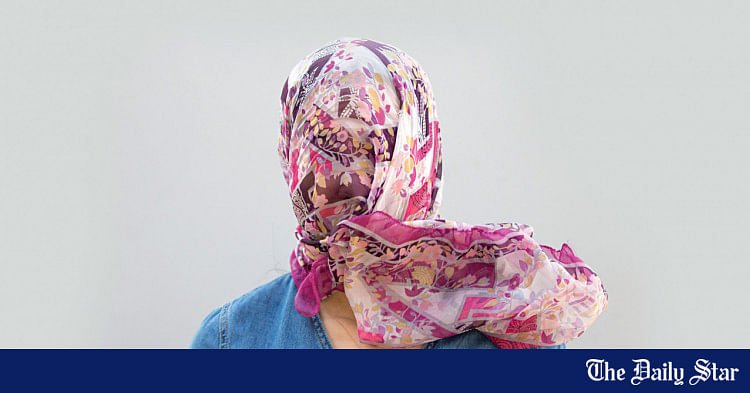Fashion
The never-ending fight for women’s clothing autonomy| The Daily Star
The right to choose one’s clothing without fear of harassment or assault is not a luxury; it’s a fundamental aspect of personal freedom. PHOTO: ORCHID CHAKMA
“>
The right to choose one’s clothing without fear of harassment or assault is not a luxury; it’s a fundamental aspect of personal freedom. PHOTO: ORCHID CHAKMA
Every time I casually reveal that I once wore burqa and hijab, the reactions I get are a mixture of surprise and bewilderment. It’s a chapter of my life that fills me not with shame, but with a deep-seated resentment—a resentment born from the realisation that my clothing choices were dictated not by personal or religious convictions, but by fear and harassers.
I was in eighth grade when my mother purchased three custom-made burqas for me. Her motivation wasn’t rooted in religious observance or cultural tradition. Instead, it was a desperate attempt to shield me from the relentless street harassment that took a toll on my mental health and, subsequently, my academic performance. My parents had exhausted every other option: confronting the harassers who could be identified immediately, seeking help from law enforcement, and even personally escorting me to school and coaching classes. The burqa was their last resort.
But could this “sartorial armour” protect me? The harsh reality is that it could not.
A 2020 Pew Research Center study reveals a troubling reality: women in 56 countries faced social hostilities due to their attire being deemed either too religious or too secular. This bidirectional pressure demonstrates that the real issue is not about specific clothing choices, but about control over women’s bodies and autonomy. Whether a woman chooses to wear a burqa or a bikini, she often finds herself subject to judgement, harassment, and even violence.
My personal experience also illustrates this pervasive problem. It has forced me to confront a critical question: does religious attire truly safeguard women from sexual harassment, let alone the objectifying male gaze? My observations and the experiences of other women in my community led me to a resounding “no.” I’ve witnessed women in burqas and niqabs/hijabs face harassment ranging from catcalls to unwanted physical contact. The clothing that was meant to protect us became, in some cases, a target for those seeking to enforce their views on women’s modesty.
Again, the reasons women choose to wear religious garments are diverse and complex. While the majority do so out of genuine religious conviction, there also coexist other reasons—for instance, a friend who confided in me said she used it as a shield to “wear whatever I want beneath it and not get judged for my clothes.” But using such attire as a defence against harassment is a deeply troubling societal failure.
Moreover, women who wear burqas and hijabs increasingly face a different kind of harassment—mostly from racists and Islamophobes. In many Western countries, Muslim women have reported verbal abuse, physical assaults, and discrimination in public spaces and workplaces simply for wearing religious attire, such as a niqab or burqa. This harassment not only violates these women’s right to religious expression, but also forces them to choose between their faith and their safety. It’s a stark reminder that the policing of women’s clothing isn’t just about modesty or secularism, it’s often a vehicle for broader prejudices and attempts to control women’s presence in public spaces.
Conversely, women who choose to dress in ways deemed “too secular” face their own set of challenges. They’re often blamed for any harassment they experience, with their clothing choices used as a justification for inexcusable behaviour. This dual pressure—to be neither too covered, nor too exposed—creates an impossible standard that traps women in a lose-lose situation.
A few years ago, at one of my previous workplaces, a male colleague made an inappropriate comment about my body structure and vocally “advised” me not to wear “tight-fitting” clothes. Yes, a male colleague was directing me on what I should wear when clearly, I was not violating the dress code of the company I was employed at. My personal stories of being forced to wear a burqa to avoid harassment or being advised on what to wear at the office are stark illustrations of a widespread phenomenon. Instead of addressing the root cause—the behaviour of harassers—society often places the burden on women to modify their appearance. This approach perpetuates the dangerous prejudice that a woman’s clothing is responsible for the actions of those who harass or assault her.
Research consistently debunks this notion. A study by Jane Workman and Elizabeth Freeburg found that people were more likely to blame rape victims who wore shorter skirts. However, this perception flies in the face of reality. Research shows no correlation between a woman’s attire and her likelihood of being assaulted.
Even in ostensibly progressive environments, the problem persists. In December 2017, US Congresswoman Marcy Kaptur shocked fellow lawmakers when she said that the revealing clothing that some members and staffers wear is an “invitation” to sexual harassment. She made the comments during a private Democratic Caucus meeting to discuss sexual harassment issues, according to a report by Politico. The incident shows how deeply ingrained these harmful attitudes are, even among those who should be champions of equality.
The neurological argument that men are more visually stimulated than women, as suggested by studies from the National Library of Medicine, is often misused to justify harassment. While biological differences exist, they do not negate personal responsibility or the capacity for self-control. A civilised society must expect and demand that all individuals, regardless of gender, exercise restraint and respect.
The consequences of this clothing-based oppression are far-reaching. It limits women’s participation in public life, affects their educational and career opportunities, and perpetuates a cycle of inequality. Moreover, it diverts attention from the real issues: the behaviour of harassers and the societal structures that enable them.
In a world where freedom of expression is championed as a fundamental human right, women continue to face an insidious form of control: the policing of their clothing. This issue transcends cultures, religions and political systems, revealing a deeply rooted societal problem that demands our attention and action.
To address this complex issue, we need a multifaceted approach. We must incorporate comprehensive programmes teaching respect, consent, and gender equality from an early age. We must also focus on legal reforms, such as stricter enforcement of anti-harassment laws and removal of clothing-based defences in assault cases.
As a responsible citizen, we must promote narratives that emphasise personal responsibility for one’s actions, regardless of others’ attire. Media also plays a significant role here. We must challenge and change the portrayal of women in the media to focus on their capabilities rather than appearance. Moreover, the matter of implementing and enforcing clear guidelines at workplaces against harassment and discrimination based on clothing should not be taken lightly anymore.
The right to choose one’s clothing without fear of harassment or assault is not a luxury; it’s a fundamental aspect of personal freedom. As a society, we must recognise that the fabric of oppression is woven not by the clothes women wear, but by the attitudes we perpetuate. It’s time to cut through these harmful narratives and create a world where women are judged not by their hemlines or headscarves, but by the content of their character and the merit of their actions.
Mahiya Tabassum is a journalist at The Daily Star.
Views expressed in this article are the author’s own.
Follow The Daily Star Opinion on Facebook for the latest opinions, commentaries and analyses by experts and professionals. To contribute your article or letter to The Daily Star Opinion, see our guidelines for submission.




 For all latest news, follow The Daily Star’s Google News channel.
For all latest news, follow The Daily Star’s Google News channel. 